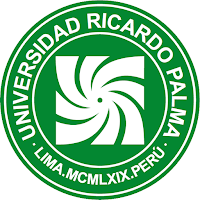The function of writing as testimonial discourse: Inca Garcilaso de la Vega and Miguel de Cervantes Saavedra
The function of writing as testimonial discourse: Inca Garcilaso de la Vega and Miguel de Cervantes Saavedra The function of writing as testimonial discourse: Inca Garcilaso de la Vega and Miguel de Cervantes Saavedra
Article Sidebar
Main Article Content
Kent Wilander Oré de la Cruz
Abstract
The present study aims to analyze and establish communicative lines of convergence and opposition between the life and work of Inca Garcilaso de la Vega and Miguel de Cervantes Saavedra, in the craft of writing as testimonial discourse. Although these two writers may appear to have different positions or interests, the value they both attach to language as to the Hispanic American culture of classical knowledge and art cannot be dismissed. Likewise, both writers belong to an important historical period, within which and from each of their geographical spaces they seek to leave in writing the ideal of a century (XVI-XVII), that is, the ideological project of their time, channeled through their own beliefs and ideas.
Article level metrics
Downloads
Metrics
Article Details

This work is licensed under a Creative Commons Attribution 4.0 International License.
La revista utiliza una licencia Creative Commons para mostrar a los lectores y a los usuarios cómo se pueden utilizar los contenidos publicados.
Los contenidos publicados en la revista están bajo una licencia CC-BY 4.0, la cual permite:
- Compartir, copiar y redistribuir el material en cualquier medio o formato.
- Adaptar, remezclar, transformar y construir a partir del material para cualquier propósito, incluso comercialmente.
Bajo los siguientes términos:
- Atribución. Usted debe dar crédito de manera adecuada, brindar un enlace a la licencia, e indicar si se han realizado cambios. Puede hacerlo en cualquier forma razonable, pero no de forma tal que sugiera que usted o su uso tienen el apoyo de la licenciante.
La información de licencia se muestra e incrusta en las páginas de artículos y en ficheros de texto completo como sigue:
«Este obra está bajo una licencia de Creative Commons Reconocimiento 4.0 Internacional».
Amorós, A. (2001). Introducción a la literatura. Castalia.
Anderson Imbert, E. (1995). Historia de la literatura hispanoamericana. Fondo de Cultura Económica.
Argullol, R. (1990). El héroe y el único. El espíritu trágico del Romanticismo. Destino.
Auerbach, E. (2011). Mimesis. La representación de la realidad en la literatura occidental. Fondo de Cultura Económica.
Ayala, F. (2005). Nota sobre la creación del «Quijote». En Molina, A., Antología de ensayos sobre el Quijote (pp. 41-54). Frente de Afirmación Hispanista.
Bloom, H. (2002). El canon occidental. La escuela y los libros de todas las épocas. Anagrama.
García-Bedoya, C. (2003). Discurso criollo y discurso andino en la literatura peruana colonial. En J. Higgins (ed.), Heterogeneidad y literatura en el Perú (pp. 179-198). Centro de Estudios Literarios Antonio Cornejo Polar.
Lienhard, M. (2003). La voz y su huella. Ediciones Casa Juan Pablos.
Mariátegui, J. C. (1995). 7 ensayos de interpretación de la realidad peruana. Amauta.
Ortega y Gasset, J. (1970). El Espectador. Alianza Editorial.
Osterc, L. (2005). El «Quijote», la Iglesia y la Inquisición. En Molina, A., Antología de ensayos sobre El Quijote (pp. 55-116). Frente de Afirmación Hispanista, A. C.
Padura, L. (2016, 20 de marzo). «¡Soy el único garcilasista en Cuba!» (Entrevista a cargo de Enrique Planas). El Comercio, 14.
Porras Barrenechea, R. (2009). Estudios garcilasistas. Fondo Editorial de la UIGV.
Pozuelo, J. M. (2009). La ficción. En M. Á. Garrido (dir.), El lenguaje literario. Vocabulario crítico (pp. 797-928). Síntesis.
Sánchez, L. A. (1981). La literatura peruana. Derrotero para una historia cultural del Perú. Juan Mejía Baca.
Tamayo, A. (1976). Literatura peruana. Librería Studium Editores.
Trapiello, A. (2005). Las vidas de Miguel de Cervantes: una biografía distinta. Fondo de Cultura Económica.
Most read articles by the same author(s)
- Kent Wilander Oré de la Cruz, The Hispano-American modernist novel: phantasmagorical representations in Fabla salvaje by César Vallejo , Archivo Vallejo: Vol. 7 No. 13 (2024): January - June










